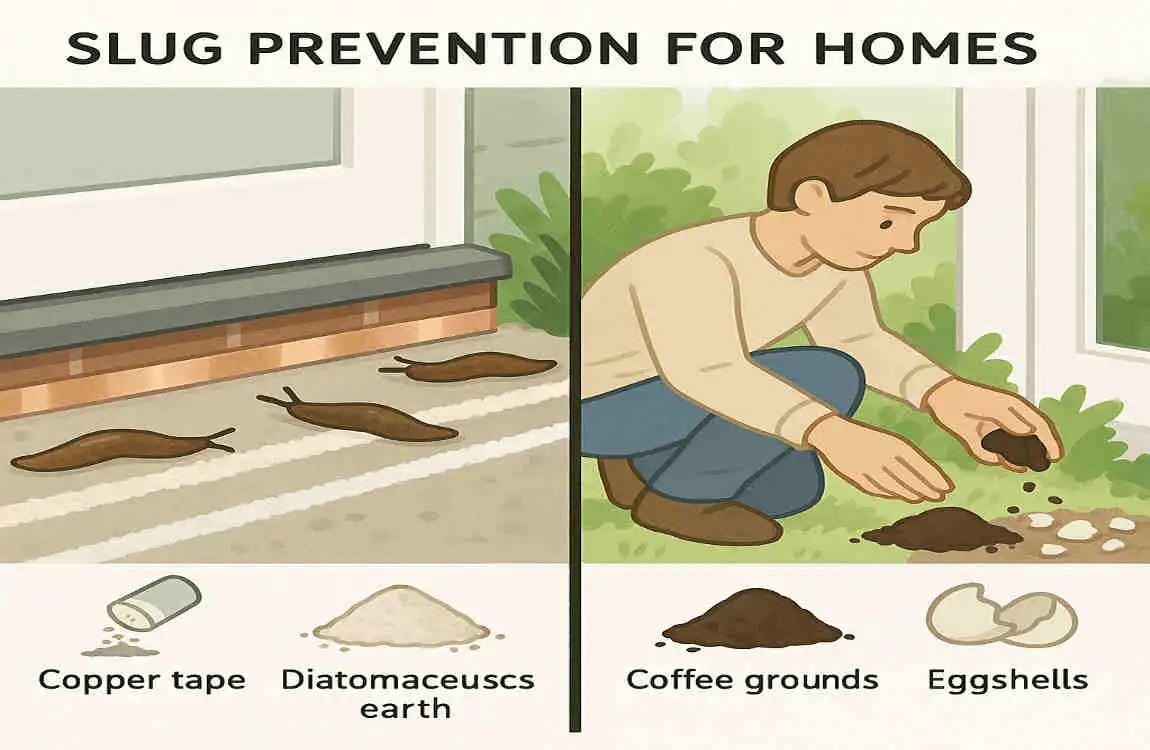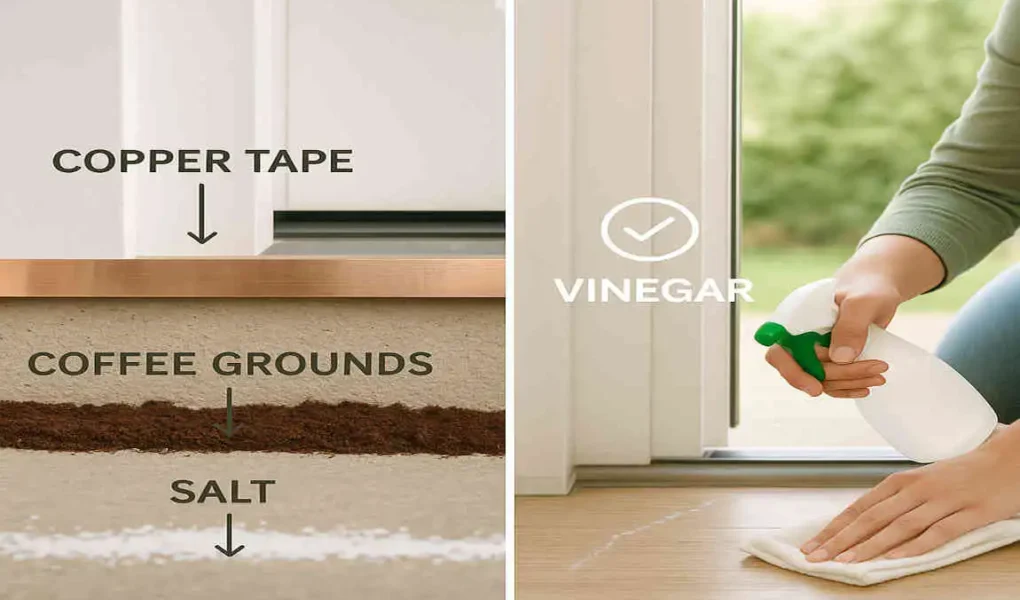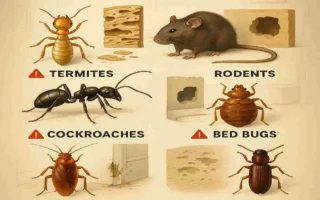Slugs are slimy creatures that can sneak into your home, causing various problems. From damaging your belongings to creating hygiene issues, these little critters can really put a damper on your living space. But don’t worry, there’s a solution! By focusing on how to stop slugs from coming into your house, you can keep your home slug-free and enjoy a more comfortable living environment.
Understanding Why Slugs Enter Homes

Slug Behavior and Habitat Preferences
Slugs are attracted to damp and dark environments, which is why your home might seem like the perfect place for them to set up camp. They thrive in areas with plenty of moisture and organic matter, making your kitchen and bathroom prime targets for growth. Understanding their behavior is crucial in preventing them from entering your home.
Common Reasons Slugs Enter Houses
There are several reasons why slugs might decide to enter your home. The main culprits are food, moisture, and shelter. If you have a leaky faucet or a damp basement, you’re essentially rolling out the welcome mat for these critters. Additionally, if you leave food out or have a compost pile near your home, you’re providing them with a tasty incentive to come inside.
Seasonal Patterns Influencing Slug Invasions
Slug activity can vary depending on the time of year. In the spring and fall, when the weather is cooler and wetter, you’re more likely to see an increase in slug populations. During the summer months, they may seek refuge indoors to escape the heat. Being aware of these seasonal patterns can help you stay one step ahead of these slimy invaders.
Importance of Identifying Entry Points
To effectively stop slugs from entering your home, you need to identify the points of entry. By understanding where they’re coming in, you can take targeted action to seal those areas and prevent future invasions. We’ll dive deeper into common entry points in the next section.
Common Entry Points for Slugs in Homes
Cracks and Gaps Around Doors and Windows
One of the most common ways slugs enter homes is through cracks and gaps around doors and windows. These tiny openings provide the perfect opportunity for them to slip inside undetected. Regularly inspecting these areas and sealing any gaps can help keep slugs out.
Drain Pipes and Vents
Drain pipes and vents are another potential entry point for slugs. These areas often have high moisture levels, which can attract slugs looking for a damp environment. Ensure that you check your pipes and vents for any signs of slug activity and take prompt action to address the issue.
Basement and Crawlspace Openings
If you have a basement or crawlspace, you need to be extra vigilant about keeping slugs out. These areas are often dark, damp, and filled with organic matter, making them prime real estate for slugs. Regularly inspect these spaces and seal any openings to prevent slugs from entering.
Pet Doors and Poorly Sealed Chimneys
Pet doors and poorly sealed chimneys can also serve as entry points for slugs. If you have a pet door, make sure it’s properly sealed when not in use. And if your chimney isn’t properly sealed, it could be an open invitation for slugs to come inside.
The Need to Inspect These Areas Regularly
To keep your home slug-free, it’s essential to regularly inspect these common entry points. By staying proactive and addressing any issues as soon as you spot them, you can prevent slugs from establishing a home.
How Do You Stop Slugs from Coming into Your House? Cleaning: Key Cleaning Principles

The Role of Cleanliness in Deterring Slugs
Cleanliness is your best defense against slugs. By keeping your home clean and free of food debris and moisture, you’re making it less appealing for slugs to set up camp. Regular cleaning can help deter slugs and keep your home free of these unwanted guests.
Keeping Indoor Areas Dry and Free of Food Debris
Slugs are attracted to moisture and food, so it’s crucial to keep your indoor areas dry and free of food debris. Wipe up any spills or leaks promptly, and ensure that food is stored in sealed containers to prevent attracting slugs.
Proper Waste Disposal Methods
Proper waste disposal is another crucial factor in preventing slugs from entering your home. Ensure that you dispose of food waste and other organic matter in sealed trash cans, and remove the trash regularly to avoid attracting slugs.
Cleaning Kitchen Floors and Counters Regularly
Your kitchen is a prime target for slugs, so it’s essential to keep your floors and counters clean. Wipe down your counters after each meal, and mop your floors regularly to remove any food particles or moisture that might attract slugs.
Why Routine Cleaning Reduces Slug Habitat Indoors
Routine cleaning is crucial in reducing slug habitat indoors. By consistently keeping your home clean and dry, you’re making it less hospitable for slugs to thrive. This ongoing effort can help prevent slugs from establishing a presence in your home.
Using Non-Toxic Cleaning Agents Safe for Pest Control
When cleaning to deter slugs, it’s important to use non-toxic cleaning agents that are safe for pest control. Harsh chemicals can be harmful to your health and the environment, so opt for natural, eco-friendly cleaners instead.
Effective Cleaning Tips to Keep Your House Slug-Free
Detailed Step-by-Step Cleaning Checklist
To help you keep your home slug-free, here’s a detailed step-by-step cleaning checklist:
- Remove clutter that provides hiding places: Slugs love to hide in dark, damp areas, so make sure to declutter your home and remove any items that could give them a hiding spot.
- Mop floors with a vinegar solution or natural slug repellents: A vinegar solution or natural slug repellent can help deter slugs from entering your home. Mop your floors regularly with one of these solutions to keep slugs at bay.
- Clean drains and gutters to reduce moisture buildup: Slugs are attracted to moisture, so it’s important to keep your drains and gutters clean and free of debris. This will help reduce the amount of moisture around your home, making it less appealing to slugs.
- Wipe down damp areas such as bathrooms and basements: Bathrooms and basements are prime targets for slugs due to their high moisture levels. Regularly wipe down these areas to keep them dry and less attractive to slugs.
- Properly store food in sealed containers: Slugs are attracted to food, so make sure to store all food items in sealed containers to prevent attracting them into your home.
The Importance of Consistent Maintenance
Consistent maintenance is crucial for keeping your home slug-free. By regularly following the cleaning checklist above, you can stay on top of any potential slug issues and prevent them from becoming a bigger problem.
Highlighting the Use of Slug-Safe Natural Cleaners
When cleaning to deter slugs, it’s important to use slug-safe natural cleaners. These eco-friendly options are safe for your family, pets, and the environment, while still effectively keeping slugs at bay.
Additional Preventive Measures Beyond Cleaning
Sealing Cracks and Gaps with Weather-Stripping and Caulk
In addition to cleaning, sealing cracks and gaps around your home is another important preventive measure. Use weather-stripping and caulk to seal any openings around doors, windows, and other potential entry points to keep slugs out.
Installing Door Sweeps and Window Screens
Door sweeps and window screens can also help prevent slugs from entering your home. These physical barriers can block slugs from slipping in through the gaps under doors or through open windows.
Creating Physical Barriers with Copper Tape or Diatomaceous Earth
Copper tape and diatomaceous earth are two natural materials that can create physical barriers to keep slugs out. Place copper tape around potential entry points, or sprinkle diatomaceous earth around your home’s perimeter to deter slugs.
Outdoor Slug Control: Clearing Leaf Litter and Standing Water
To prevent slugs from getting close to your home in the first place, it’s important to practice outdoor slug control. Clear away leaf litter and standing water near your home’s foundation to make the area less appealing to slugs.
Using Slug Traps and Natural Repellents Outside
Slug traps and natural repellents can also be used outside your home to reduce the slug population near your property. These methods can help keep slugs from even reaching your home’s exterior.
Safe and Eco-friendly Natural Alternatives for Slug Control
Benefits of Natural Slug Repellents Versus Chemicals
When it comes to controlling slugs, natural repellents have several benefits over chemical alternatives. They’re safer for your family, pets, and the environment, and they can be just as effective at deterring slugs.
Recipes for Homemade Deterrents
Here are a few recipes for homemade slug deterrents you can try:
- Salt barriers: Sprinkle salt around potential entry points to create a barrier that slugs won’t cross.
- Coffee grounds: Spread used coffee grounds around your home’s perimeter to deter slugs.
- Eggshells: Crush eggshells and scatter them around your home to create a barrier that slugs won’t want to cross.
How to Apply These Safely Indoors and Outdoors
When using these natural deterrents, ensure that you apply them safely both indoors and outdoors. Follow the instructions carefully and take precautions to avoid any potential hazards.
The Cleaning-Slug Control Synergy
By combining regular cleaning with natural slug control methods, you can create a powerful synergy that keeps your home free from slugs. This ongoing effort can help you maintain a comfortable, slug-free living environment.
Monitoring and Maintaining a Slug-Free Home
How Often to Perform Slug Inspections
To keep your home slug-free, it’s important to perform regular slug inspections. Check your home’s interior and exterior at least once a week for any signs of slug activity.
Signs of Slug Presence to Watch For
Keep an eye out for these common signs of slug presence:
- Silvery slime trails: Slugs leave behind a telltale silvery slime trail as they move around.
- Holes in plants: If you have indoor plants, watch for holes in the leaves, which can be a sign of slug damage.
Record Keeping to Track Cleaning and Preventive Efforts
To stay on top of your slug prevention efforts, keep a record of your cleaning and preventive measures. This can help you track your progress and identify areas that require additional attention.
When to Call Professional Pest Control
If you’ve tried cleaning and DIY methods but are still struggling with a slug problem, it may be time to call in a professional pest control service. They can help you identify the root of the issue and provide targeted solutions to keep your home slug-free.




